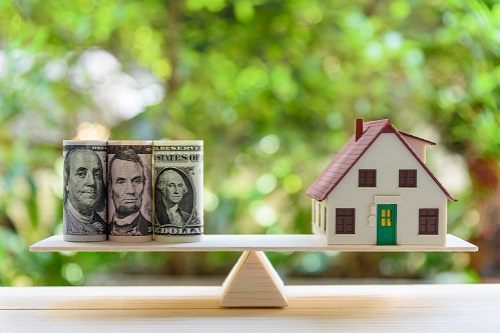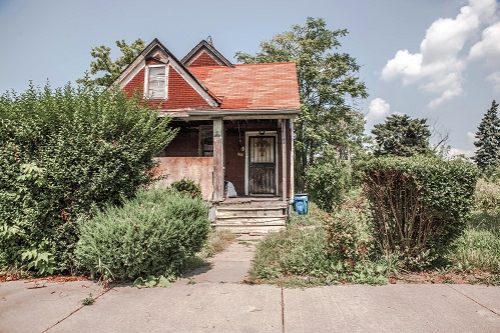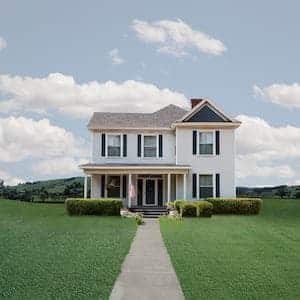Does home insurance cover storm damage?
A standard home insurance policy generally covers damage from wind, falling objects (like trees), rainfall that enters the house via a damaged roof or window, and hail. The house itself, other structures on your property, and your personal property will all be covered. Home insurance will also cover damage to your landscaping resulting from a storm.
An important exclusion in your home insurance policy is floods. If a storm comes with heavy rainfall that results in overland flooding, damage caused by that flooding is not covered by home insurance. You’ll need a separate flood insurance policy to cover that type of damage.
"Flood is simply not covered by standard homeowner forms," Wells says. " It is imperative that you purchase flood insurance if you live anywhere that it rains (yes, that’s everywhere.)"
To make sure you are fully protected from storm damage, make sure to discuss your home insurance coverage with your insurance company.
Does condo insurance cover storm damage?
Yes. Your condo insurance policy is very similar to a home insurance policy, with the exception that it doesn’t cover the structure. That’s covered by the condo association. So, if there’s damage to the structure caused by a storm, the association’s policy covers that. If that damage causes rain to get inside and damage your property, your condo policy has you covered.
Like home insurance, however, condo insurance doesn't cover floods.
Does renters insurance cover storm damage?
Renters insurance covers your personal property against storm damage. Similar to a condo policy, you’re not responsible for the structure itself – that’s the landlord’s policy. But any damage to your personal property will be covered. Again, flood damage requires a separate policy.
Is hail damage covered by home insurance?
Generally, yes, home insurance covers hail damage. However, in some cases, home insurance companies may restrict coverage for certain types of hail damage, often with the use of cosmetic damage exclusions. This type of exclusion means the company won’t pay for any damage that is only cosmetic and doesn’t affect function, like dents in your siding.
You may also have an additional deductible on your homeowners policy that applies only to hail damage.
Some insurance companies offer endorsements to ensure better coverage for storm damage. They include matching siding, which requires that the insurance company replace all of the siding if a match can’t be found to replace damaged parts.
Is wind damage covered by insurance?
Yes, insurance covers wind damage, although in some areas of the country, you may need to add windstorm damage as an endorsement.
What does wind and hail insurance cover?
Whether included in your standard policy or added as an endorsement, wind and hail insurance will cover damage to your home, including your roof, siding, and any decks or porches, as well as other structures like a detached garage. It will cover any damage to your personal property that happens as a result of the storm as well, both in and outside your house.
How does home insurance cover storm damage?
There are several coverages on your home insurance policy that will apply to storm damage. They cover different aspects of the damage.
Dwelling coverage. This covers damage to the house itself that’s caused by a storm. This includes your roof, siding, an attached deck or porch, windows and any other attached structures like an attached garage.
Other structures coverage. This will pay for any damage to structures on the property that are not attached to the house. That includes fences, sheds and detached garages.
Personal property coverage. This covers anything that isn’t attached to the house; all of your belongings, both inside and out.
Loss of use, or additional living expenses (ALE). Loss of use, also known as ALE, pays for any extra living expenses you incur when you can’t live at home or use parts of your home after covered storm damage. That includes things like a hotel and dining out.
Your insurance company will also reimburse you for any repairs you make to the house in the aftermath of a storm to prevent further damage to the house or your property.
Does car insurance cover hail damage and other storm damage?
If you carry the right coverage, your car insurance will pay for hail damage to your car. The only car insurance coverage that covers hail damage is comprehensive, also known as other than collision.
This coverage pays for any damage that is not the result of a crash, including weather damage from hail. It also covers you if heavy winds cause a tree to fall on your car, or any other falling object that’s the result of a storm. Car insurance also covers lightning damage.
Unlike home insurance, comprehensive car insurance does cover damage caused by overland flooding.
How to protect your home from storm damage
You can protect your home from storm damage, at least partially, with a few simple steps, like upgrades and maintenance. Some of those upgrades can even earn you a discount on your home insurance.
- Hail-resistant shingles can reduce the risk of hail damage to your home, and insurance companies often offer a discount. There may also be discounts for using other hail and wind-resistant materials when remodeling your home.
- To reduce the risk of personal property and car damage, bring everything you can inside when a storm is coming. Fold up patio umbrellas, cover patio furniture and grills and make sure anything that might blow away is secured.
- Bring your cars into the garage if you can, along with bikes, sports equipment and anything else you might leave outside on a normal day. If you can’t get your car into a garage, try to park it in a sheltered location.
- Finally, maintenance is a vital part of avoiding damage. Make sure to clean your gutters to keep rainwater flowing, and take down any trees in your yard that are dead or unhealthy.
While home insurance will pay for storm damage, it’s your responsibility as a homeowner to reduce the risk of damage in any way you can to avoid an expensive claim.
Frequently asked questions
Does home insurance cover lightning damage?
Yes, home insurance covers lightning damage. That includes a fire started by a lightning strike or electronics and appliances that are damaged with lightning strikes your house. Damage to the home itself is covered by the dwelling coverage, while damage to your belongings is covered by personal property coverage.
Sources
- National Oceanic and Atmospheric Administration National Centers for Environmental Information. “2024: An active year of U.S. billion-dollar weather and climate disasters.” Accessed April 2025




